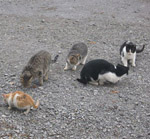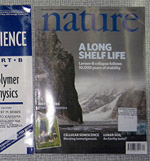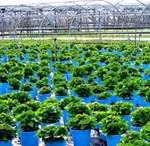The impact of grazing intensity on birds in pastures
 Agriculture,
Agriculture,  Birds
Birds  Savannah Sparrow (Passerculus sandwichensis) is a common bird of the pastures of south Florida. Image credit, Cephas.Increased grazing pressure on pastures in south Florida significantly altered bird species richness and abundance according to research recently published in the journal Rangeland Ecology and Management.
Savannah Sparrow (Passerculus sandwichensis) is a common bird of the pastures of south Florida. Image credit, Cephas.Increased grazing pressure on pastures in south Florida significantly altered bird species richness and abundance according to research recently published in the journal Rangeland Ecology and Management.
Based on the findings the study authors advise that minimizing grazing pressure on pastures would benefit a number of types of birds. However, the results were not entirely consistent as the abundance of some birds increased with more intensive grazing.
Emma Willcox and fellow researchers from University of Florida manipulated grazing pressure on improved and semi-native pastures over four years and studied the effects on vegetation communities and the subsequent response of birds. Improved pastures are those that have been cleared, tilled, and reseeded with improved forage types while semi-native fields have a mix of improved and native species.
The results from the research have implications for wildlife and agricultural managers seeking to maintain specific bird species or guilds (i.e. groups of related species).
The study showed that improved pastures are more affected by grazing, with almost all vegetation attributes exhibiting declines in the face of increased grazing pressure. Semi-native pastures, however, were better able to withstand the pressure and showed greater resiliency. Overall, plant communities trended toward more even structure, though "spatial heterogeneity in plant structure and composition was largely maintained on mixed pastures throughout the study."
This change to more homogeneous habitat was reflected in the response of avian communities using the pastures. On improved pastures, declines were observed in total avian species richness as well as short-distance and neotropical migrant and permanent resident guilds.
However, while some species were lost, others increased in abundance such that total avian abundance was unchanged. The authors noted that "loss of spatial heterogeneity typically results in a lack of suitable habitat for birds that occupy the extremes of the vegetation structure gradient."
The resiliency of the semi-native pasture was reflected in the birds they supported: declines in species richness and abundance were more often noted only at higher grazing pressures and after longer periods of time. Fewer guilds were adversely affected and more either remained unchanged or increased. Some birds benefited from the grazing: short-distant migrants species richness increased, as did the number of species in the urban guild and abundance within the grassland guild.
The authors conclude that where bird conservation is a key objective, grazing on lands needs to be carefully managed to meet the needs of specific guilds of species. The evidence suggests that managers need to pay particularly close attention to improved pastures where increased grazing intensity can lead to declines in species richness and abundance of a number of guilds.
Reviewed by Ian Adams
Willcox, E., Tanner, G., Giuliano, W., & McSorley, R. (2010). Avian Community Response to Grazing Intensity on Monoculture and Mixed Florida Pastures Rangeland Ecology & Management, 63 (2), 203-222 DOI: 10.2111/REM-D-09-00092.1




Reader Comments